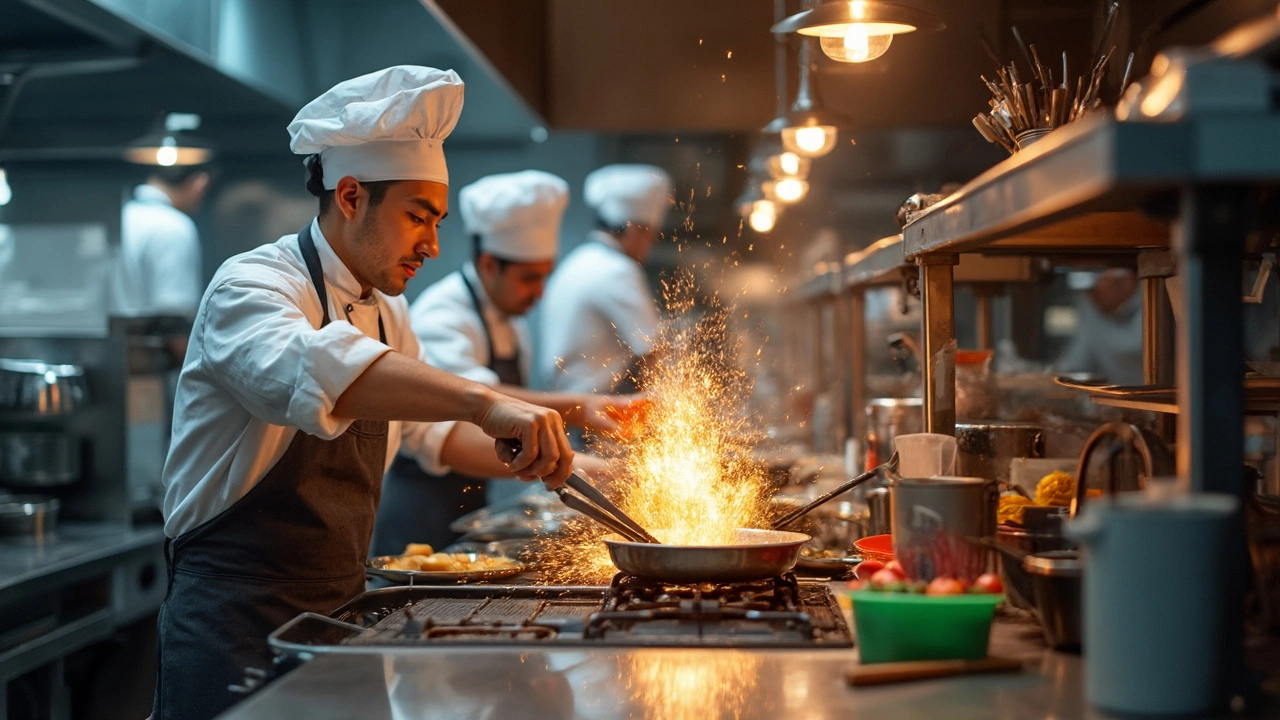Chef Cleaning Tips: Fast, Easy Hacks for a Spotless Kitchen
If you spend most of your day cooking, cleaning can feel like a mountain you never finish. The good news? You don’t need a deep‑clean marathon after every shift. A few smart habits and quick tricks can keep your kitchen looking professional without stealing your time.
Kill Grease Fast – No Fancy Chemicals Needed
Grease is the biggest enemy in any chef’s kitchen. Instead of expensive sprays, grab baking soda and vinegar. Sprinkle baking soda on a damp sponge, scrub the greasy surface, then spray vinegar. The fizz breaks down the oil, and a quick wipe leaves the area shine‑free. For stubborn black baked‑on grease on oven doors, let the mixture sit a few minutes before scrubbing with a non‑abrasive pad. This method is safe, cheap, and smells much better than store‑bought cleaners.
Glass Oven Doors and Windows – Streak‑Free Every Time
Glass oven doors and kitchen windows get spotted with splatters and steam marks. A mix of equal parts water and white vinegar in a spray bottle works wonders. Spray, let it sit for 30 seconds, then wipe with a lint‑free cloth. For extra shine, finish with a thin layer of crumpled newspaper – it avoids streaks better than paper towels. If you need a natural polish, a dash of rubbing alcohol added to the spray cuts through any remaining film.
Another quick win: keep a small squeegee by the sink. After each dish‑washing session, run it over the window and oven glass. The water sheeting off takes dust and grime with it, so you won’t have to battle buildup later.
Now let’s talk routine. Wiping down surfaces while food is still hot can be dangerous, but waiting until the surface cools a little makes the job easier. Use a microfiber cloth dampened with the vinegar solution – it lifts food particles without scratching stainless steel or wood.
For stainless‑steel appliances, a few drops of olive oil on a soft cloth will give a protective sheen and hide fingerprints. Just rub gently in the direction of the grain; you’ll see the difference instantly.
Don’t forget the floor. A bucket of warm water, a splash of mild dish soap, and a mop with a microfiber head will clean up spills without leaving a residue. If you notice stubborn oil patches, sprinkle a little baking soda, let it sit, then sweep it away before mopping.
Finally, schedule a weekly deep clean for the hardest‑to‑reach places – the back of the fridge, vent hoods, and the underside of burners. A quick 15‑minute session with a brush and the same vinegar‑baking soda combo will keep hidden grime from turning into a bigger mess.
By making these small steps part of your daily rhythm, you’ll spend less time scrubbing and more time creating great dishes. Keep the kitchen tidy, stay safe, and let the simple, eco‑friendly tricks do the heavy lifting for you.

What Chefs Use to Clean a Kitchen: Pro Tips Inside
Ever wonder how chefs keep their kitchens spotless despite the chaos of cooking? This article delves into the tools and strategies chefs use to maintain cleanliness in their kitchens. From the essentials like baking soda and vinegar to commercial-grade supplies and gadgets, we cover it all. Get ready to transform your kitchen cleaning routine with practical, chef-approved tips.
Read More